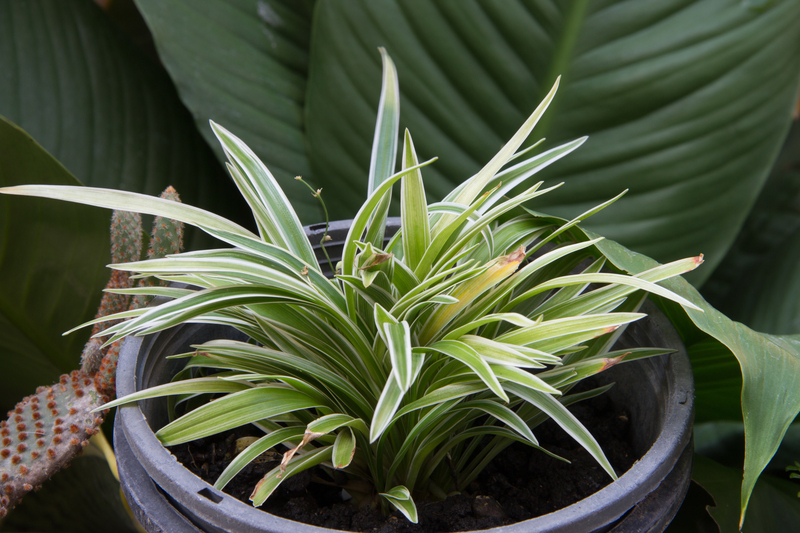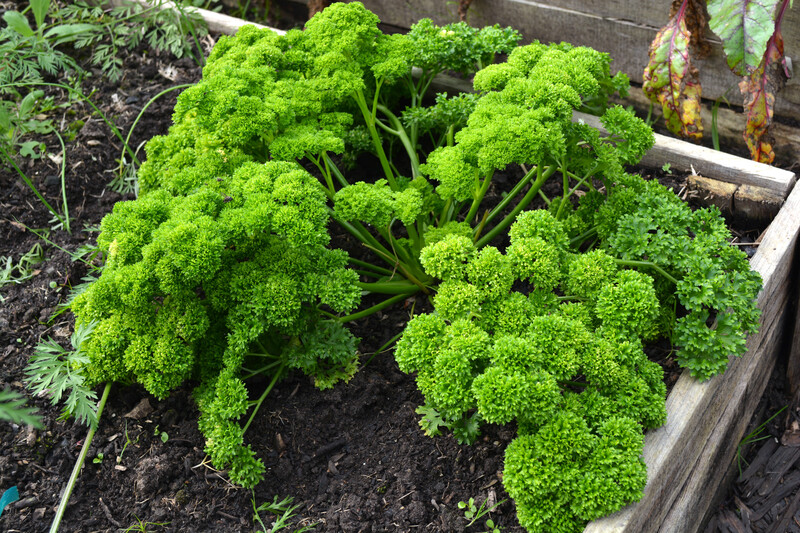From Seedling to Spice: Growing the Perfect Herb Garden
Posted on 01/07/2025
From Seedling to Spice: Growing the Perfect Herb Garden
Imagine stepping outside your back door and plucking fresh basil, mint, or rosemary to enhance your meals. Growing a successful herb garden is not only a rewarding hobby, but it also brings unmatched flavor to your kitchen and a touch of greenery to your home environment.
This comprehensive guide will walk you through every step on how to grow the perfect herb garden--from selecting resilient seedlings to harvesting the aromatic spices that make home cooking extraordinary. Whether you are a seasoned gardener or a curious beginner, this guide aims to answer your questions, share expert tips, and help you create a flourishing oasis of herbs.

Benefits of Growing Your Own Herb Garden
- Fresh Flavors: Homegrown herbs deliver superior taste compared to store-bought varieties.
- Cost Efficiency: A packet of seeds can replace countless store-bought bunches of herbs.
- Health Advantages: Herbs offer nutritional benefits and are packed with antioxidants.
- Environmental Impact: Reduce your carbon footprint by growing your own produce.
- Therapeutic Benefits: Gardening is a mindful, relaxing, and rewarding activity.
Planning Your Herb Garden: The Basics Matter
Choosing Between Indoor and Outdoor Herb Gardens
Before you plant your first seed, decide whether you want your herb garden indoors or outdoors. Each option comes with unique benefits:
- Indoor Herb Gardens: Suitable for those with limited space; perfect for kitchen windowsills or sunny corners. Enjoy herbs year-round and bring nature indoors.
- Outdoor Herb Gardens: Ideal for those with backyards, patios, or balconies. Get bigger harvests, a wider selection of herb varieties, and stronger plants thanks to natural sunlight.
*Tip: Some gardeners combine both methods, keeping hardy perennials outside and delicate annuals on kitchen windowsills.*
Herb Garden Essentials: What You Need
- Containers or Raised Beds: Make sure they have good drainage.
- Potting Mix: Use light, well-draining soil tailored to herbs.
- Sunlight: Most herbs need 6-8 hours of sunlight daily.
- Watering Can or Drip Irrigation: Consistent but not excessive watering is key.
- Fertilizer: Organic compost or all-purpose fertilizer supports healthy growth.
Choosing the Best Herbs for Your Garden
Popular Culinary Herbs for Beginners
- Basil: A classic for Italian dishes; loves warmth and sunlight.
- Parsley: Versatile and easy to grow; suitable for containers.
- Mint: Thrives almost anywhere, but keep it contained--it spreads!
- Rosemary: Hardy, drought-tolerant, and fragrant.
- Chives: Mild onion flavor; ideal for garnishing.
- Thyme: Low-growing and perfect for borders and pots.
- Cilantro (Coriander): Essential for Latin and Asian dishes.
- Dill: Great for salads and pickling; loves full sun.
Other Herbs to Consider
- Sage: Delicious with poultry and stuffing.
- Oregano: A must-have for Mediterranean cuisine.
- Tarragon: Offers a unique, slightly licorice flavor.
- Lemon Balm: Bright lemony notes; good for teas.
Tip: Start with 3-5 of your favorite herbs to avoid being overwhelmed.
From Seedling to Spice: Growing Herbs from Seeds or Seedlings
Seed or Seedling: Which Is Better?
You can grow herbs from seeds or purchase young herb seedlings from your local nursery. Each method has its pros and cons:
- Seeds: Cost-effective and offer a wider variety, but require patience and careful nurturing.
- Seedlings: More convenient and reliable, especially for beginners eager to see quick results.
If you're an enthusiastic beginner, start with seedlings for rapid success. As you gain confidence, experiment with starting herbs from seeds.
How to Start Herbs from Seeds
- Choose a high-quality seed-starting mix and fill seed trays or small pots.
- Sow seeds according to packet instructions--many herbs need just a light covering of soil.
- Keep the soil moist but not waterlogged. Mist regularly to prevent disturbance.
- Place containers in a warm, bright location. A sunny window or grow lights are ideal.
- Transplant seedlings after they sprout and develop true leaves, typically 2-4 weeks after sowing.
Transplanting Seedlings into Your Herb Garden
- Harden off: Gradually expose seedlings to outdoor conditions for a week.
- Choose a cloudy day: This prevents shock from direct sun.
- Spacing matters: Most herbs need ample airflow--refer to seed packets or labels for guidance.
Caring for Your Herb Garden
Sunlight & Temperature Requirements
- Most culinary herbs crave 6-8 hours of direct sunlight daily.
- In extremely hot regions, provide afternoon shade or use shade cloth to prevent wilting.
- For winter gardening, move delicate herbs like basil indoors or provide protection from frost.
Watering Tips
- Herbs generally prefer lightly moist, well-drained soil.
- Overwatering is a common mistake. Let the top inch of soil dry out between waterings.
- Water early in the morning for best results. Avoid wetting the leaves to reduce disease risk.
Fertilizing Your Herb Garden
- Herbs are light feeders; heavy fertilization can affect flavor.
- Add a thin layer of organic compost at planting time.
- Supplement with a balanced, all-purpose fertilizer once a month during the growing season.
Pruning and Pinching Back Herbs
- Regular harvesting encourages bushier, more productive plants.
- For leafy herbs (basil, mint), pinching tops promotes branching.
- Remove flower buds if you want more leaves and less flavor loss.
Pest Management in Your Herb Garden
- Encourage beneficial insects, like ladybugs and bees, to control harmful pests.
- Use companion planting (e.g., marigolds with basil) to deter aphids and whiteflies.
- Inspect regularly for signs of damage. Remove pests by hand or spray with diluted neem oil.
Harvesting and Using Your Homegrown Herbs
When and How to Harvest Herbs
- Pick leaves in the early morning, after dew dries but before the sun evaporates essential oils.
- Use sharp scissors or pruners for clean cuts.
- Never harvest more than one-third of a plant at a time; allow time for regrowth.
Preserving Herbs: From Garden to Kitchen All Year Long
- Drying: Hang bunches upside down in a well-ventilated, dark, and dry place.
- Freezing: Chop herbs and freeze with a little water in ice cube trays (perfect for soups and stews).
- Infusing: Create herb oils, vinegars, and butters for unique culinary treats.
Troubleshooting Common Herb Gardening Problems
Yellowing Leaves or Wilting
- Often a sign of overwatering or poor drainage.
- Check roots; ensure your soil dries slightly between waterings.
Herbs Becoming Spindly or Leggy
- Usually due to insufficient sunlight. Move plants to a sunnier spot or supplement with grow lights.
- Pinch back the tips regularly to promote bushiness.
Pest or Disease Issues
- Look for aphids, spider mites, or fungal spots.
- Treat naturally with insecticidal soap, neem oil, or by increasing air circulation.
Advanced Tips for Herb Gardening Success
Container Combinations
- Group herbs with similar water and light needs. For example, group thyme, rosemary, and sage together--they like it dry.
- Mint should be planted separately to prevent it from overtaking other herbs.
Succession Planting
- Stagger plantings of annual herbs (like basil and cilantro) every few weeks to ensure a continuous harvest throughout the season.
Soil Health Matters
- Rotate crops annually to prevent pest and disease buildup.
- Amend soil each spring with compost or aged manure.
Creative Herb Garden Ideas
- Try vertical gardens or hanging pots for small spaces.
- Plant a themed herb garden--for example, a pizza garden with basil, oregano, and parsley or a tea garden with mint, chamomile, and lemon balm.
- Create decorative borders with lavender or thyme.
Final Thoughts: Savor Your Herb Garden Journey From Seedling to Spice
Growing your own herb garden is a fulfilling adventure that rewards patience, practice, and a little bit of passion. Whether you are cultivating basil in a kitchen window or tending to sprawling rosemary bushes in your backyard, herbs offer a unique blend of practicality and pleasure. Their vibrant flavors, delightful fragrances, and impressive health benefits will transform not only your meals but also your lifestyle.
Take the first step today, and soon you'll be savoring the fruits of your labor--from seedling to spice, from garden to table. Happy gardening!

Frequently Asked Questions on Herb Gardening
Do I need a lot of space to start an herb garden?
No! Many herbs thrive in small containers on windowsills or balconies. Space is not a limitation; creativity is key!
How can I ensure my herb garden thrives all year round?
Grow a mix of perennial herbs (rosemary, chives, oregano) and annuals (basil, cilantro), and consider moving tender herbs indoors during colder months.
Can I use garden soil for my herb pots?
It's best to use potting mix or a special herb blend for containers, as garden soil can become compacted and may contain pests or weed seeds.

